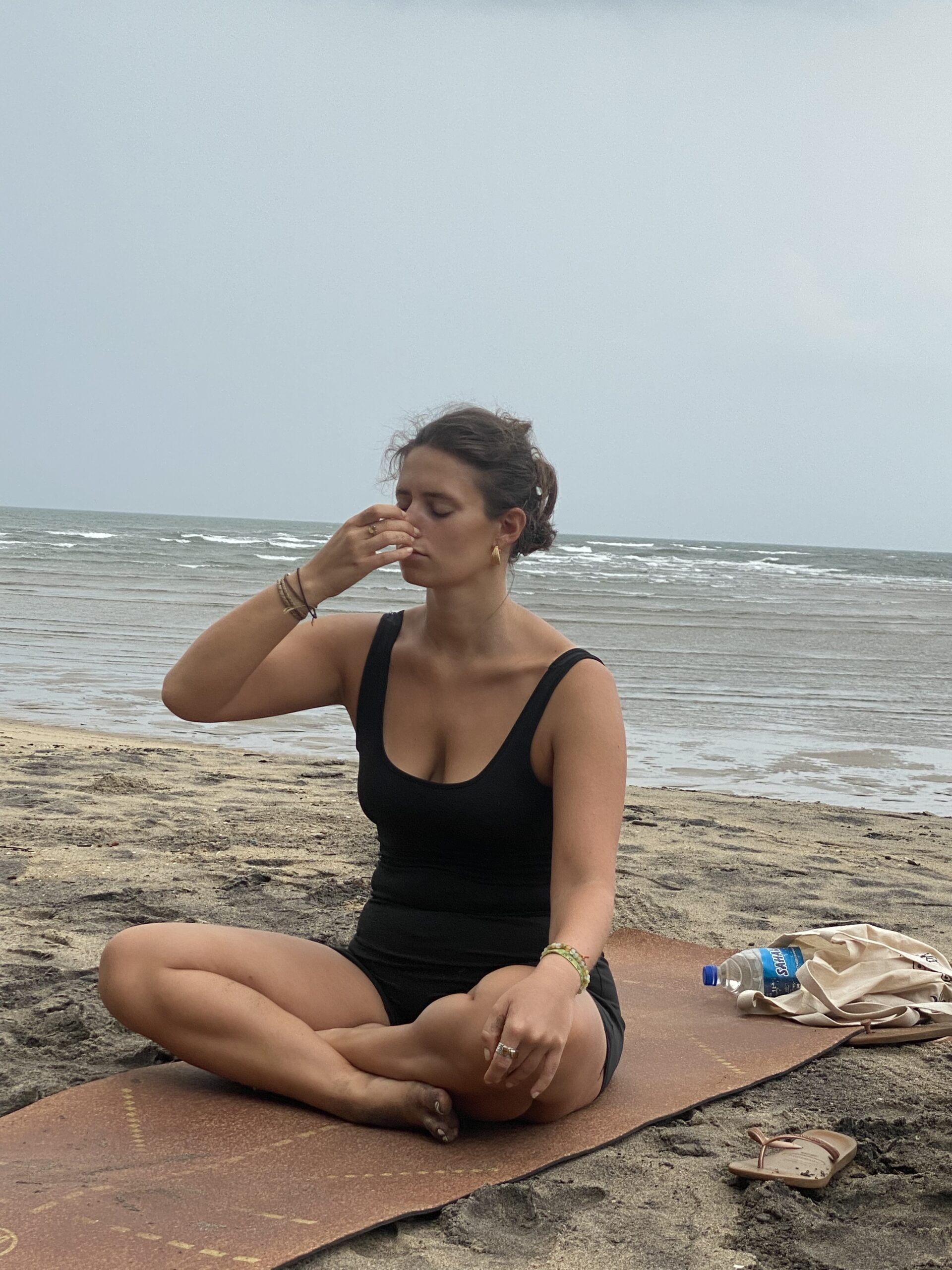
Yoga Teacher Training Course in Goa – A Yoga Teacher Training (YTT) course is a comprehensive program designed to deepen your understanding and practice of yoga and equip you with the skills and knowledge necessary to confidently and safely teach yoga to others. These courses go far beyond physical postures, delving into the rich philosophy, anatomy, and methodology of yoga.
Here’s a detailed breakdown of what a Yoga Teacher Training Course typically involves:
Common Levels of Yoga Teacher Training
The most common YTT certifications are recognized by organizations like Yoga Alliance, which sets standards for curriculum and hours.
- 200-Hour Yoga Teacher Training (RYT 200): This is the foundational level and the most common starting point for aspiring yoga teachers. It provides a comprehensive introduction to the core principles of yoga and prepares you to teach basic yoga classes.
- 300-Hour Yoga Teacher Training (Advanced): This course builds upon the 200-hour training, offering deeper dives into specialized topics, advanced asanas, subtle anatomy, and more refined teaching methodologies.
- 500-Hour Yoga Teacher Training (RYT 500): This is a combination of the 200-hour and 300-hour trainings, often taken as a single, intensive program. It signifies a high level of expertise and allows you to lead more advanced classes and workshops.

Key Components of a Yoga Teacher Training Curriculum
Regardless of the hour designation, a YTT course will generally cover the following key areas:
-
Techniques, Training, and Practice (Asana, Pranayama, Meditation, Kriyas):
- Asana (Physical Postures): In-depth study and practice of various yoga poses, including correct alignment, modifications for different bodies, benefits, and contraindications. You’ll learn how to perform, demonstrate, and teach a wide range of asanas, from foundational to more advanced. Different styles like Hatha, Vinyasa, Ashtanga, Restorative, and Yin may be explored depending on the school’s focus.
- Pranayama (Breathing Techniques): Understanding and practicing various breathing exercises to expand lung capacity, relax the nervous system, and balance energy. This includes techniques like Kapalabhati, Anuloma Viloma (alternate nostril breathing), Ujjayi, and more.
- Meditation: Exploration of different meditation techniques, their benefits, and how to guide others through meditation. This often includes physical and mental meditation practices, and sometimes mantra chanting.
- Kriyas (Cleansing Techniques): Introduction to traditional yogic purification practices like Neti (nasal cleansing), Kapalabhati (skull shining breath), Dhauti (internal cleansing), etc.
- Bandhas (Energy Locks) & Mudras (Hand Gestures): Learning about these subtle energy practices and their applications.
-
Yoga Philosophy, Lifestyle, and Ethics:
- Ancient Texts: Study of foundational yogic texts such as the Yoga Sutras of Patanjali, the Bhagavad Gita, and the Hatha Yoga Pradipika. These texts provide the ethical and philosophical framework of yoga.
- Yamas & Niyamas: Exploration of the ethical guidelines and moral observances that form the foundation of yogic living.
- History of Yoga: Understanding the evolution of yoga through different periods and traditions.
- Yogic Lifestyle: Discussing how to integrate yogic principles into daily life, including diet (often vegetarianism is emphasized), self-discipline, and compassion.
- Ethics for Yoga Teachers: Guidelines for professional conduct, boundaries, and creating a safe and inclusive environment for students.
-
Anatomy and Physiology:
- Human Anatomy: Understanding the major body systems (skeletal, muscular, respiratory, circulatory, nervous, endocrine) and how they relate to yoga practice.
- Physiology of Yoga: How asanas and pranayama affect the different body systems.
- Subtle Anatomy: Introduction to concepts like chakras (energy centers), nadis (energy channels), and the energetic body.
- Injury Prevention and Modifications: Learning how to prevent common yoga-related injuries and offer appropriate modifications for students with various physical conditions or limitations.
-
Teaching Methodology:
- Principles of Demonstration, Observation, Assisting, and Correction: Learning how to effectively demonstrate poses, observe students’ bodies, offer verbal cues, and provide hands-on adjustments (with consent).
- Instructional Skills: Developing effective communication skills, using clear and concise language, active listening, and creating a positive learning environment.
- Sequencing: Understanding how to design and structure yoga classes for different levels and intentions. This includes warm-ups, peak poses, cool-downs, and relaxation.
- Class Management: Techniques for managing a group of students, time management, and creating a harmonious flow in class.
- Business of Yoga: Practical aspects of becoming a yoga teacher, including marketing yourself, setting up classes, and building a professional career.
-
Practicum:
- Practice Teaching: Significant time dedicated to teaching fellow students under the guidance of experienced instructors. This is crucial for building confidence and refining teaching skills.
- Receiving Feedback: Getting constructive feedback on your teaching style and delivery.
- Observation: Observing experienced teachers and learning from their approach.
Prerequisites for Yoga Teacher Training
While specific requirements can vary by school, generally:
- Passion for Yoga: A genuine interest in yoga and a desire to deepen your understanding.
- Consistent Personal Practice: Most programs recommend or require a certain amount of prior yoga practice (e.g., 6 months to a year). This ensures you have a basic familiarity with asanas and are ready for the intensive nature of the training.
- Physical and Mental Fitness: The training can be physically and mentally demanding, so being in good health is important.
- No prior teaching experience is required for 200-hour programs. These courses are designed to teach you how to teach.
Yoga Teacher Training Course in Goa – What to Expect During the Course
- Intensive Schedule: YTTs are often intensive, especially residential programs. Expect long days filled with practice, lectures, discussions, and homework.
- Personal Growth: The training is not just about learning to teach; it’s a transformative journey of self-discovery and personal growth. You’ll likely be challenged physically, mentally, and emotionally.
- Community: You’ll build strong bonds with your fellow trainees, forming a supportive community that often extends beyond the training.
- Deep Immersion: Whether residential or non-residential, the course encourages a deep immersion into the yogic lifestyle.
- Homework and Assignments: Expect reading assignments, journaling, self-reflection exercises, and potentially practical assignments like developing class sequences.
Career Opportunities After Yoga Teacher Training
Upon successful completion of a certified YTT, you open up various career paths:
- Yoga Instructor: The most direct path. You can teach at:
- Yoga studios
- Fitness centers and gyms
- Community centers
- Corporate offices
- Schools and universities
- Retreats and wellness centers
- Private Yoga Teacher: Offer personalized one-on-one sessions tailored to individual client needs.
- Online Yoga Teacher/Content Creator: Teach virtual classes, create online courses, or develop yoga content for platforms like YouTube.
- Yoga Therapist (with further specialization): After advanced training, you can work with individuals dealing with specific health conditions, injuries, or chronic pain, using yoga as a therapeutic tool.
- Wellness Coach: Combine your yoga knowledge with coaching skills to guide clients in holistic health and wellness.
- Yoga Studio Owner: For entrepreneurial individuals, opening and managing your own yoga studio.
- Specialized Yoga: Teach specific populations such as prenatal yoga, children’s yoga, senior yoga, or trauma-informed yoga (often requires additional specialized training).
